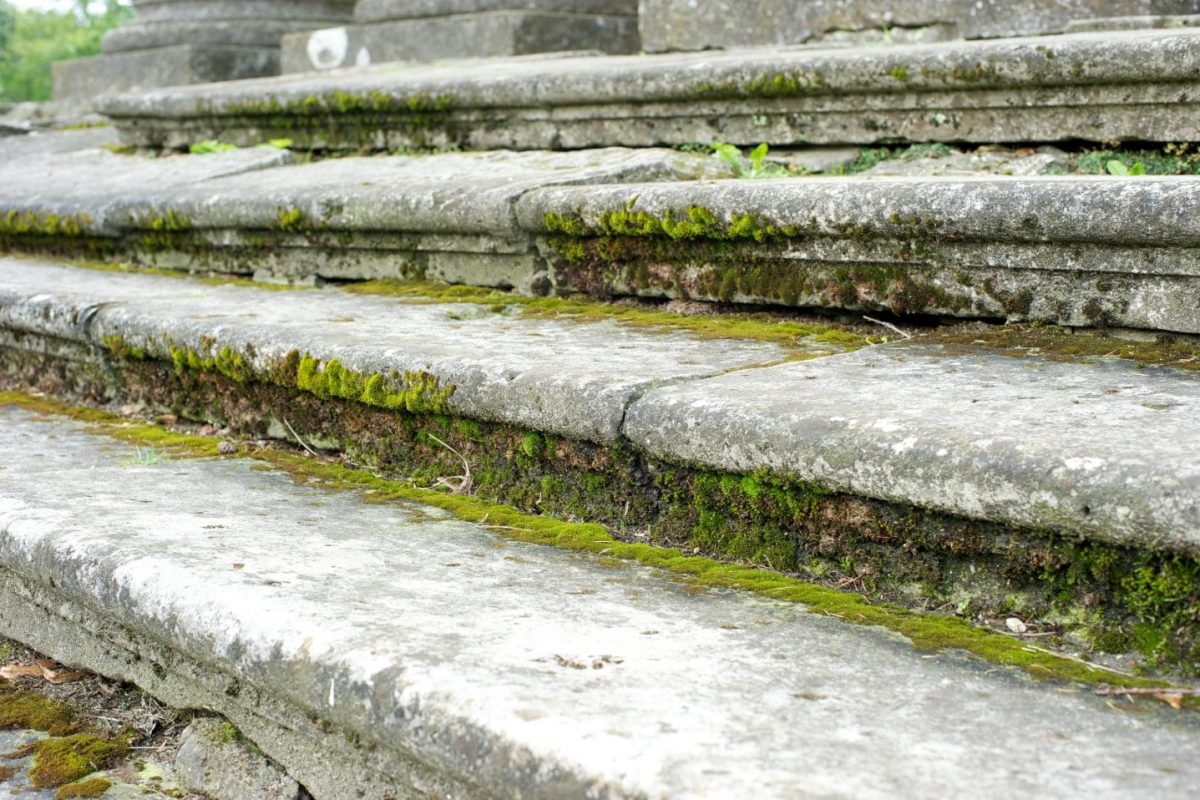The UK is by nature a damp environment providing ideal condition for algae, mould and fungi to thrive. Most paths or patios that are not subject to high volume of traffic or are in the shade will eventually develop colonies of mosses, lichens, fungi and algae. These colonies can become deeply engrained in the surface, making removing algae a difficult task.
Natural stone such as Indian sandstone and Travertine paving even if it has been sealed is very susceptible to this. Once ingrained these colonies are difficult to remove, even with the use of a high pressure jet wash they can still remain deep in the surface.
Removing Algae: Why Is It So Difficult?
The most difficult type of algae to remove is lichen. Lichen have the appearance of black spots on the surface. No amount of scrubbing or scrapping will remove the marks as they are not just on the surface of the paving or patio.
Lichens are symbiotic organisms, which means they are two different organisms living together. One of the organisms provides photosynthesis which is usually some form of algae or bacteria. This then gets into a mutually beneficial relationship with a fungus, which functions as an anchor as well as acquiring minerals from the substrate the lichen is growing on. The fungus sends out root structures known as hyphae deep down into the substrate, namely the paving or patio slabs.
They then form a ‘crustose’ growth. Crustose lichen tightly bond to a substrate forming a biological layer of the adhering organisms. Once in the substrate, crustose lichens are almost impossible to remove. Left untreated lichen will only increase in size. This makes removing algae even more of a difficult task.
How To Decontaminate Your Path, Paving or Patio
As mentioned above contaminated paths and patios infested with fungi, mould and algae are difficult to cure. Promain can provide a solution in the form of Centrecoat BG Hard Landscape Cleaner.
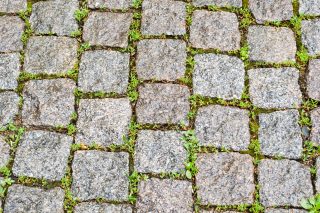
Centrecoat BG Hard Landscape Cleaner has been formulated and manufactured in the UK. It is an environmentally friendly, high performance renovating cleaner. This product has been formulated to remove organic and microbiological growth contaminants. It is suitable for porous hard ground surfaces such as natural stone, travertine, concrete, asphalt, brick, terracotta plus many other materials.
Application of Centrecoat BG Hard Landscape Cleaner
Below our technical team have detailed the best method of application as well as tips and hints on how to get the best performance from Centrecoat BG Hard Landscape Cleaner.
Part One: Removing Algae Contamination
Following extensive testing of many brand leading products, we found that the best product for removing lichen, algae, mould and mosses is by far the Centrecoat BG Hard Landscape Cleaner.
Before application, ensure there is dry weather forecast and light to no wind. This is due to air flowing across the surface will rapidly dry the surface.
A great tip to ensure the best performance is to allow the surface to warm up throughout the day and apply the product in the afternoon once the temperature of the surface has increased. This increased surface temperature allows the product to perform better.
Centrecoat BG Hard Landscape Cleaner is supplied in a ready to use solution with a light gel consistency. Using a stiff broom or brush, first clean the surface removing any loose material. Protect any surface not being treated and any plants or shrubs near to the area by covering with plastic sheeting.
Before use, shake the container well, then decant the solution into a low pressure sprayer (Garden Sprayer). Use the sprayer to fully saturate the surface. Once the surface has been coated leave the solution to work for between 30-90 minutes. After allowing the product to work rinse away with clean water or a high pressure jet wash.
Removing Algae From Heavily Contaminated Surfaces
Untreated over time infestations of mould and algae increase in size and become more ingrained into the surface, making them harder to remove. Also, mould, fungi and algae can not only affect the surface but also ingress into the paving from beneath and also the sides. If this has happened to your paving or if you’re paving is heavily contaminated, there is a method you can employ to increase the performance of the BG Hard Landscape Cleaner.
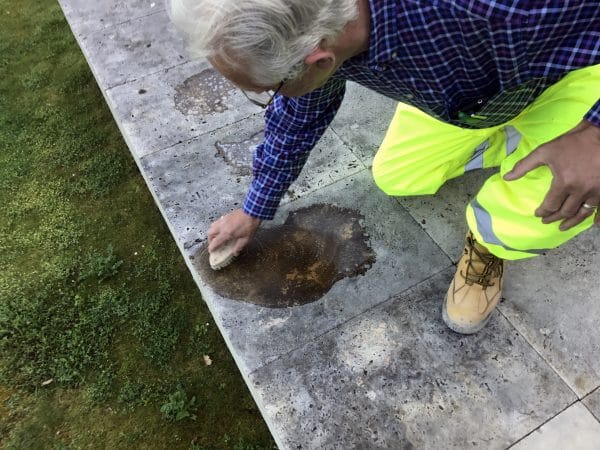
Prepare the surface in the same way as previously detailed, removing loose material from the surface with a stiff broom or brush. Next is to fully saturate the surface with Centrecoat BG Hard Landscape Cleaner.
Once saturated cover the surface with a thin plastic sheeting or even cling film and leave to work overnight. This will prevent the solution from evaporating allowing it to penetrate deep into the surface as well as down the sides and beneath the paving. The next day, remove the plastic sheeting and rinse away the solution with either fresh water or a high pressure jet wash.
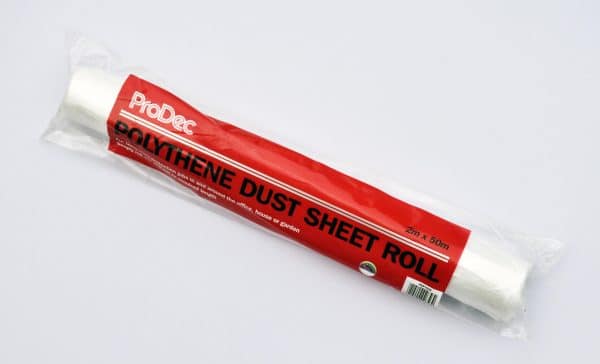
Part Two: How To Prevent An Infestation Of Lichen
Once your path or patio is clean, restored and free from unsightly lichens, fungi and algae, the next challenge is to prevent it from reoccurring.
As most paths and patios are located in gardens, we do not traffic them much throughout the winter. In low sunlight and high humidity, contamination easily takes hold again.
Centrecoat BG Hard Landscape Cleaner can once again be used to prevent the surface from becoming infested. This is achieved by treating the surface in the autumn months around September / October time. Simply brush away any loose material and apply a generous coat of Centrecoat BG Hard Landscape Cleaner. This should aid removing algae in the warmer months.
This time do not rinse away – just leave it on the surface to absorb into the substrate. This allows the product to saturate into the surface and continue to work and prevent mould, fungi or algae forming during the winter months. Treating your surface this way each year will keep your path, patio or paving looking its best.
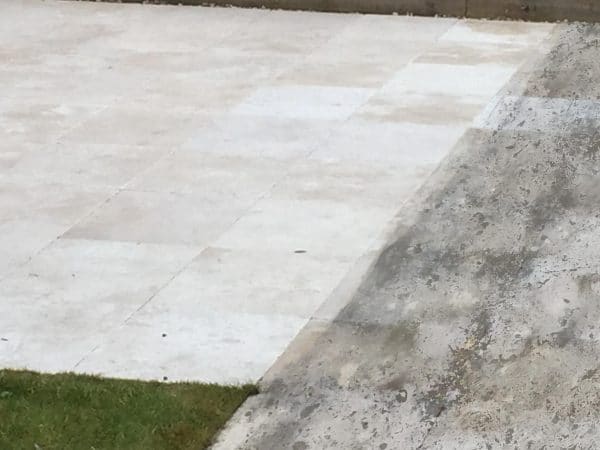
Optional Sealing The Surface Of The Substrate
Another option is to seal the surface. Sealing the surface means no water can ingress into the fabric of the paving material. This will prevent the access of water providing the conditions for mould, algae and fungi to thrive.
An excellent method of sealing is to firstly apply a coat of a biocide such as Centrecoat GS36 followed by a surface sealer. Applying a biocide first and then sealing will create hostile conditions for algae, mould and fungi. This increased protection of the stone will keeping them at their best.
How To Seal Your Patio
To seal your path or patio in this way first clean and restore the area with Centrecoat BG Hard Landscape Cleaner as previously detailed. Once completed, saturate the surface with Centrecoat BR Roof Cleaner or GS36. To use Centrecoat BR Roof Cleaner dilute a ratio of 60ml of product to 1 litre of fresh clean water. Decant the solution into a low pressure sprayer and fully coat the surface. Once saturated allow to completely dry. Once the surface has fully dried you can then seal the surface. For sealing the surface we would recommend using Centrecoat All Surface Protector.
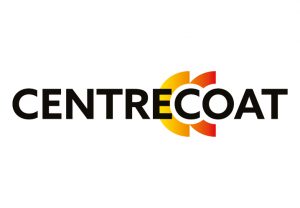
Before applying the product ensure the surface is clean, dry and free from any dirt loose particles or contamination. Before use, shake the container well. Decant the Centrecoat All Surface Protector into a low pressure sprayer. Apply 2 coats to the surface of the path or patio in a ‘’wet on wet’’ application. ‘’Wet on wet’’ application means you should not let the surface dry between coats.
On completion allow Centrecoat All Surface Protector to dry for a minimum of 24 hours before walking on the surface.
This method can also be used on new paving to prevent and lichens taking hold. If installing natural stone paving it is advisable to seal the surface after laying. This is because natural stone is more susceptible to infestations of mould, algae and fungi due to the porous nature and minerals contained within the stone.
If you require further advise or guidance do not hesitate to contact our technical team on 01462 421 33 opt 2. Our technical team can provide specifications and guidance tailored to your individual requirements for removing algae and much more.

